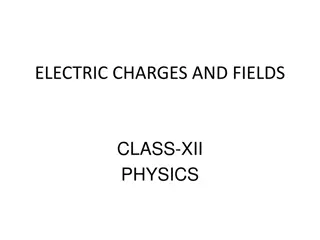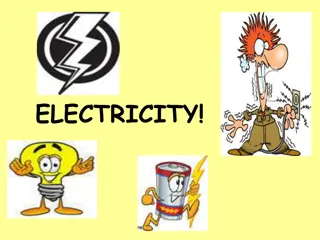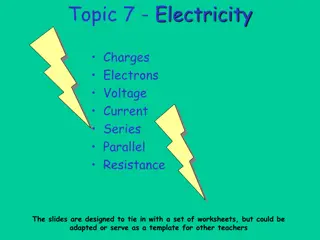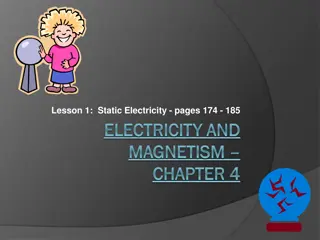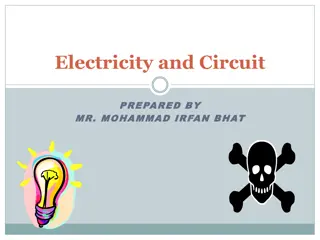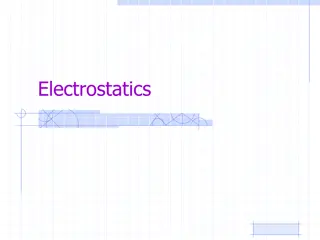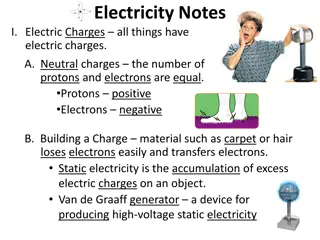Understanding Static Electricity and Electrostatics
Static electricity is a result of electric charge buildup on insulating materials due to friction, causing electrons to transfer and create a charge difference. This can lead to phenomena like a balloon sticking to a wall. The origin of static charge lies in the electrons and protons within atoms, with materials becoming charged when electrons are rubbed off and not easily flowing away. Forces between charges, such as the repulsion of like charges and attraction of opposite charges, can be observed using insulating rods. Understanding how static charge is created and behaves is essential in grasping the principles of electrostatics.
Download Presentation

Please find below an Image/Link to download the presentation.
The content on the website is provided AS IS for your information and personal use only. It may not be sold, licensed, or shared on other websites without obtaining consent from the author. Download presentation by click this link. If you encounter any issues during the download, it is possible that the publisher has removed the file from their server.
E N D
Presentation Transcript
Where does static charge come from? All materials are made of atoms, which contain electric charges. Around the outside of an atom are electrons, which have a negative charge. The nucleus at the center of an atom contains protons, which have a positive charge. An atom has equal amounts of negative and positive charges, which balance each other, so the atom has no overall charge. Electrons do not always stay attached to atoms and can sometimes be removed by rubbing.
What causes static electricity? Static electricity is due to electric charge that builds up on the surface of an insulator, such as a plastic comb. The charge that has built up cannot easily flow away from the insulator, which is why it is called static electricity.
How does static charge build up? Static charge can build up when two insulating materials are rubbed together, such as a plastic comb moving through hair. Friction between the materials causes electrons to be transferred from one material to the other: One material ends up with more electrons, so it now has an overall negative charge. One material ends up with fewer electrons, so it now has an overall positive charge.
How can static charge be created? Friction can be used to create a static charge. If an insulator is rubbed with a cloth, it can become charged in one of two ways: Electrons move from the cloth to the insulator. Electrons move from the insulator to the cloth. OR The insulator ends up with an overall negative charge. The insulator ends up with an overall positive charge.
What are the forces between charges? The forces between charges can be investigated using rods made of insulating materials. perpex rods What happens when two positively-charged perspex rods are placed near each other? The rods repel each other because they have the same overall charge. What will happen if one rod is replaced with a charged Polythene rod? rods repel each other forward_arrow_colour
How do opposite charges behave? When a charged Perspex rod is placed near a charged Polythene rod, the rods attract each other. Perspex rod Polythene rod Why does this happen? The Perspex rod has an overall positive charge and the Polythene rod has an overall negative charge. The overall charges of these rods are opposite and so they attract each other. rods attract each other forward_arrow_colour






